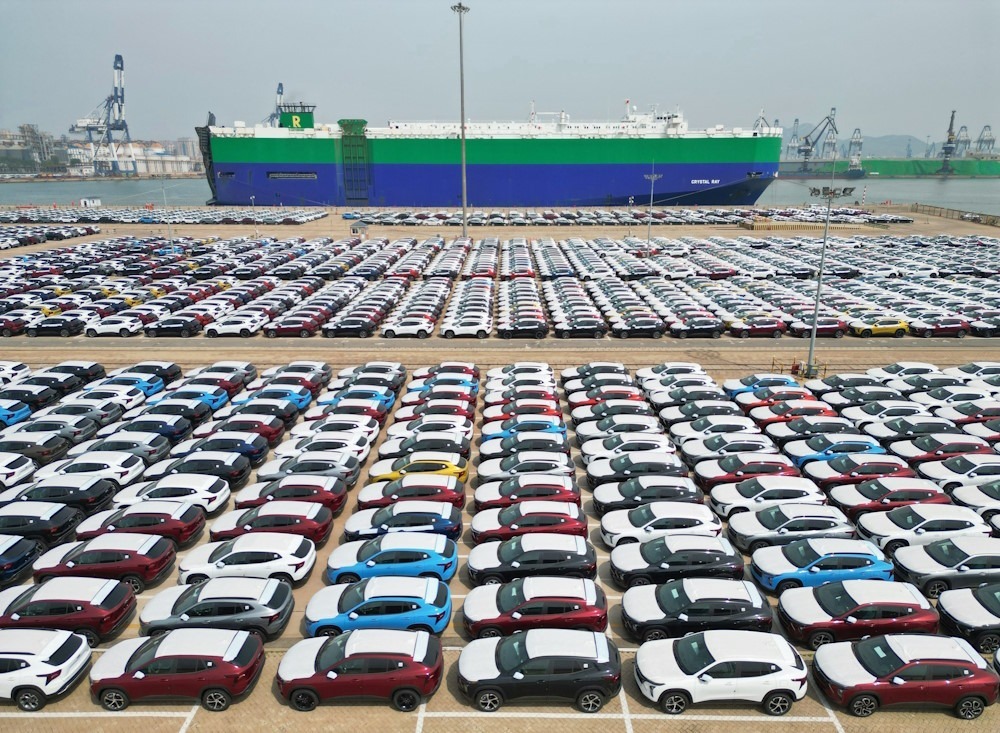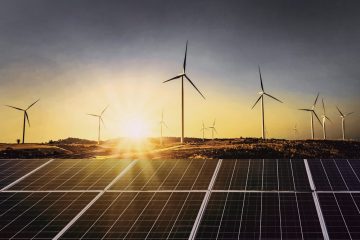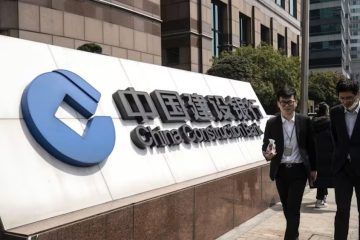What Makes China’s Electric Vehicle Production Unmatched

When it comes to electric vehicles, China is blazing ahead. Younger manufacturers have jumped on the electric vehicle bandwagon and are now producing more vehicles per year, more advanced smart technology, and more options for consumers than their international competitors.
Chinese automakers have disrupted global processes based on decades of producing sophisticated combustion-engine automobiles, which has allowed them to innovate roughly 30% faster than traditional manufacturers, according to industry executives. They tend to numerous developmental tasks simultaneously. They are open to replacing larger, slower suppliers with more nimble ones. In place of laborious mechanical tests, they rely more on virtual ones. And they are changing the rules for how to determine whether a vehicle is ready to be sold.
When it comes to Chinese competitors, foreign automakers are becoming more and more cautious, and they aren’t shy about admitting they’re pursuing the game. Fears that China may flood the world with inexpensive cars due to its worldwide ambitions and prowess are adding fuel to the fire as demand for electric vehicles declines.
In contrast to many established automakers, NIO, a top electric-vehicle startup in China, takes less than 36 months from project inception to customer delivery, despite burning through a lot of cash. One explanation is that the automobiles it releases have hidden technologies, like an extra chip, that enable regular software updates that bring new functions.
“The faster you can introduce a new technology to the market, provided that it’s a reliable technology, then the chance for you to gain market share will be much bigger,” said Mark Zhou, head of NIO’s product committee.
The electric car startup Zeekr, which is part of the decades-old auto giant Geely, can design and build a vehicle from the ground up in just 24 months. The company’s models, which include SUVs, MPVs, and hatchbacks, are constantly in the works, and they all use the same digital architecture and production processes as other Geely brands, such Smart and Polestar.
The Chinese government’s stimulus programs have helped propel the country to the top of the global EV sales charts. The country’s automakers put the consumer first by putting an emphasis on digital and software technologies across the board, from driving assistance features to in-car entertainment.
Chinese automakers are regularly updating and releasing new models despite the decrease in demand for electric vehicles, especially in China. Ninety percent of the increase in passenger-car sales in China in 2017 came from newly-released models, according the country’s passenger-car association.
The vehicles have a short lifespan due to the fact that Chinese consumers have a preference for new or recently produced vehicles. According to research by consulting firm AlixPartners, domestic EV manufacturers have a model lifecycle of 1.3 years before an update or refresh, whereas overseas brands have a lifecycle of 4.2 years.
Many international automakers are increasingly turning to their Chinese competitors for lessons, going against the grain of industry norm. Elon Musk of Tesla and Jim Farley of Ford have both predicted that China will provide the greatest challenge to their companies in the years to come. When it comes to speed, Volkswagen and Nissan are taking a page out of China’s playbook.
If global automakers reduce investments at the same time as their Chinese competitors increase them, they run the danger of slipping technologically behind. Apple has canceled its electric vehicle project, and Elon Musk, CEO of Tesla, announced that the business will begin shipping the revised Roadster next year after years of delay. Despite the current slowdown, the proportion of electric vehicles to total vehicle sales is projected to reach 40% by 2027.
Volkswagen is now forming partnerships with Chinese enterprises in an effort to streamline its operations. The company’s China business head pointed out that local manufacturers only take around 2½ years to bring a new product to market, while the corporation took nearly four years.
Automobile giants like Ford and Nissan are increasingly shifting production to their Chinese plants for global export. In terms of global vehicle exports, China overtook Japan last year.
Uncertainty around automobiles manufactured in China is growing. The Biden administration announced on Thursday that it will look into foreign automotive technology, pointing to possible national security concerns posed by China. It seems that China’s electric vehicle manufacturers are the targets of an antisubsidy investigation.
China is making progress, but not always in novel ways. The country’s car manufacturers are following Tesla’s lead and implementing some of the company’s ideas, such as enhancing vehicle functions through software upgrades. Chinese manufacturer BYD has surpassed Tesla to become the leading global seller of electric vehicles.
We don’t yet know if there are any costs and benefits to rapid development vs. car safety and quality because China’s EV boom is still relatively new. While Chinese automakers maintain they never cut corners, industry insiders claim the country’s top priority is expansion, in contrast to the legacy automakers’ strong emphasis on quality and safety.
Many development steps being conducted simultaneously, according to executives, as Chinese carmakers rush to manufacture software-driven smart EVs. There used to be a strict order to the steps involved in producing gas-powered automobiles: design, engineering, and production.
The Chinese electric vehicle industry relies significantly on simulation software for rapid prototyping and testing. Using 3D printed prototypes, engineers can go through trial and error considerably quicker, and virtual parts and mockups can be worked on across teams, according to executives at Zeekr and NIO.
The development of software for assisted driving and powertrain management does not have to wait for hardware components to be finished, according to Zhu Ling, a vice president of Zeekr.
CEO Joe Xia announced that JiYue, an electric vehicle brand co-founded by Geely and Baidu, a Chinese digital behemoth, can complete product design in six months. Employees from software, product development, sales, marketing, and manufacturing accompany him on his nearly weekly visits to the design studio. He assured everyone that any adjustments made to the design’s features would be easily understood and implemented.
Christoph Weber, general manager of China for AutoForm, a Swiss business that provides manufacturing simulation software, claimed that the well-defined norms and rules used by German and Japanese automakers slow down the production process.
Once considered China’s Tesla killer, EV manufacturer NIO has altered their market readiness standards. Releases are categorized as “minimum viable products” by the company. That indicates their hardware is more sophisticated than what the software can handle right now, whether it’s cameras or sensors. In order to take use of underutilized features, engineers keep working on new technologies and then update drivers over-the-air.
Upon its introduction in June 2022, the ES7 SUV from NIO featured four Nvidia Orin chips; however, only three of those were actually utilized. Last year, the fourth chip was turned on to increase computation performance, which allows the car screen to display a traffic light signal along with a real-time countdown. The vehicle now alerts the driver when a traffic light changes to green, according to another upgrade. With the upcoming update from NIO, the vehicle will be able to respond to traffic signals by starting or stopping the engine automatically.
With the minimum viable product enabling us to surpass our competition, that’s appealing enough to our users,” Zhou stated.
Despite mounting losses and the layoff of 10% of employees towards the end of last year, NIO continues to crank out new models. Industry insiders said that global automakers usually employ a rigorous screening process before approving new suppliers. To save time and effort later on, Chinese companies will involve suppliers early on in the car-design process.
Since acquiring the company over ten years ago, BYD has reduced the delivery time from a Japanese mold supplier from over a year to approximately six months. BYD accomplished this by incorporating supplier specialists’ advice on molding into its early stages of development and by setting its design earlier in the process.
The Zeekr X is a high-end hatchback crossover that features an in-car refrigerator that was originally purchased from a reputable manufacturer. However, according to Zhu, the supplier’s quote was excessively expensive and the delivery time was too long. The business saved two months of delivery time by going with a smaller manufacturer that focuses in outdoor refrigerators.
“The market condition is totally different whether your car is launched six months earlier or later in the age of EVs,” Zhu added.
In an effort to save time, Chinese automakers are standardizing their products more and more. Executives compare digital vehicle operating systems—the backbone of smartcars—to the traditional mechanical platforms, but they also standardize crucial software.
This past year, XPeng, a young electric vehicle business, unveiled SEPA2.0, a system that integrates many components for usage in all XPeng models. These components include the operating system, driver-assistance software, and battery pack design. XPeng claims a twenty percent reduction in R&D times.
One area where conventional automakers like Toyota and Volkswagen have failed is in developing software for automobiles that works well with hardware.
The fact that XPeng produces both the hardware and software for its vehicles in-house, according to co-president Brian Gu, is one reason why the company can take this approach. Historically, global automakers would outsource the software development to third parties. Last year, Volkswagen partnered with XPeng to develop vehicles and technology by acquiring a stake in the company.
Numerous Chinese EV manufacturers are more akin to startup companies than established manufacturers. A smaller percentage of their staff reports consistently working overtime. According to industry analysts, executives are increasingly inclined to bypass normal procedures in order to speed up the launch of new goods, regardless of the difficulty in mitigating risks and expenses in the event of errors.
The next model’s look at NIO is based on ideas submitted by the company’s car designers in China and Munich. With the use of exacting clay models in both nations, CEO William Li attends weekly design meetings and makes all the final decisions regarding the designs of future models. The design chief of NIO, Kris Tomasson, has experience working with Ford and BMW, and he claims that this is in contrast to the lengthy procedure used by many Western automakers.










